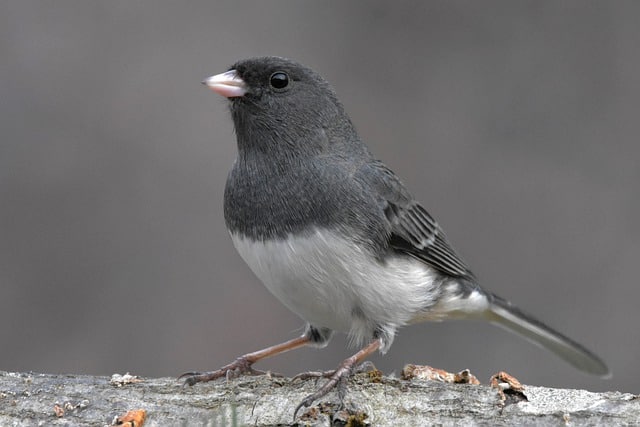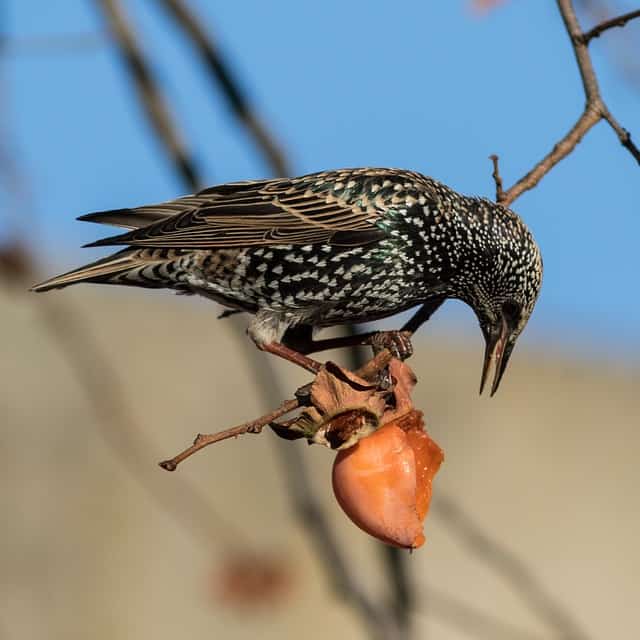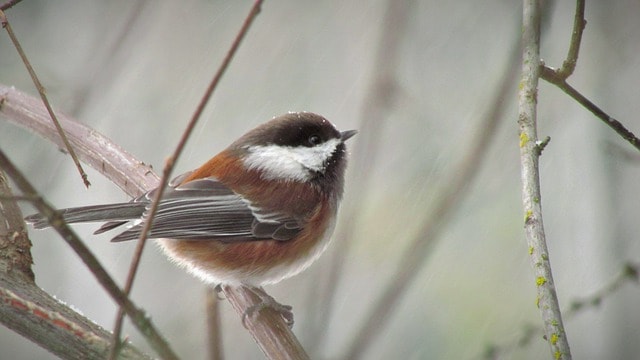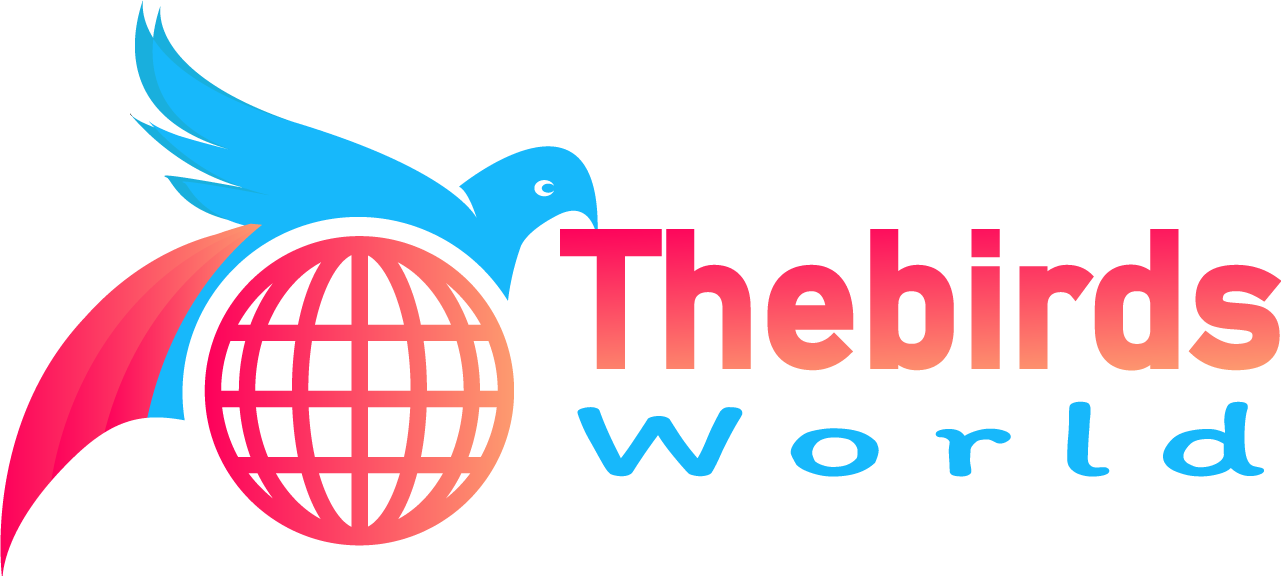British Columbia has a diverse range of backyard birds. And In this article, I’ll list and explain all the backyard birds of British Columbia In Detail.
Note: If you’re short on time I have compiled a table of all the backyard birds with identification and their Diet. You can also read about these birds in detail below.
| Backyard Birds in British Columbia | Length | Weight | Identification(Color) | Diet/Favorite Food |
| American Robin | 23-28 cm | 77 gm (2.7 oz) | These birds have black heads and backs with a hint of red or orange on their breast. | Mostly insects, berries, earthworms. In early summer, insects make up the majority of the diet; they also feed on many earthworms, snails, spiders, and other invertebrates. |
| Song Sparrow | 12-17 cm | 19 gm (0.60z) | Brown-streaked birds are well known for singing all day just in order to attract mates during the season. | They eat a wide variety of insects like caterpillars, beetles, midges, spiders, and earthworms, along with buckwheat, raspberries, sunflower, wild cherries, wheat, and rice. |
| Northern Flicker | 30-35 cm | 120 gm(4.23oz) | Large woodpeckers, with a size in between crows and Robins, with brown body color and black spots, bars, and crescents all over their bodies along with a red nape. They also have hints of yellow on their bodies as well. | Black oil sunflower seeds are their favorite. |
| Dark-eyed Junco | 12-16 cm | 19 gm(0.67oz) | These are dark-eyed variants of Sparrows. These birds are long-distance migratory birds. | Black oil sunflower seeds, nyjer, cracked corn, millet, and peanuts. |
| Northwestern Crow | 15.8-20.9 in (40-53 cm) | 11.2-21.9 oz (316-620 g) | This crow has a completely black body, even legs, and bill. | They mostly eat different aquatic invertebrates, garbage, and carrion |
| Spotted Towhee | 17 cm (6.7 in) and 21 cm (8.3 in) | 33 g (1.2 oz) and 49 g (1.7 oz) | This new-world sparrow has a long, dark, fan-shaped tail with a round body, bright red eyes, and dull pink legs | This bird mostly eats insects, seeds, berries |
| Black-Capped Chickadee | 10-15 cm | 12 gm (0.4oz) | Small bird with a big round head. They have black caps and beaks, white cheeks, with a gray back, wings, and tail. | They eat seeds, different berries, insects, suet, sunflower seeds, peanut butter, and spiders. |
| Swainson’s Thrush | 6.3-7.5 in (16-19 cm) | 0.8-1.6 oz (23-45 g) | This bird has a medium-brown color with a pale underbody and spotted chests and large buffy eyerings. | This bird mostly eats arthropods, insects, and fruits |
| Golden-crowned Sparrow | 5.9-7.1 in (15-18 cm) | 1.1-1.2 oz (30-33 g) | This bird has a streaked brown upper body and gray to the brown lower body, with a black crown and bright-yellow forehead. Although the color changes according to season and age. | They mostly eat seeds and insects. |
| Cedar Waxwing | 16 cm | 32 gm (1.1oz) | These birds with a pale brown head, chest, and crest, are elegant and extremely social. They have a pale shade of yellow on their bellies. A narrow black mask on their faces. | They feed on small fruits like serviceberry, dogwood, juniper, winterberry, and hawthorn. |
| European Starling | 22 cm | 58-100 gm (2.04- 3.5oz) | These birds are stocky black, with a purple, green and blue hue. These birds are famous for their aggressive behavior. | They eat insects like flies, beetles, caterpillars, earthworms, and spiders, along with fruits like cherries, holly berries, mulberries, Virginia Creeper, sumac, blackberries, and even seeds and grains. |
| Red-winged Blackbird | 24cm/37cm | 85 gm (2.9oz) | All black only with a bright red and yellow patch on the top of their wings. The female is pale brown. | Mixed grains. |
| Barn Swallow | 15-20 cm | 17-20 gm (0.59-0.70oz) | These are small birds in a combination of deep blue, black, and reddish-brown. Their tails have long outer feathers. | Ground-up eggshells are their favorite. |
| House Finch | 14 cm | 19-22 gm (0.6-0.7oz) | These birds have a redhead and breast in the males and a brown streak of colors in females. They are generally noisy and move in flocks. | Seeds, buds, and fruits like thistle, cactus, cherries, apricots, plums, blackberries, figs, and strawberries. |
| Red-breasted Nuthatch | 12 cm | 10 gm(0.35oz) | These birds are blue-gray in color with black stripes and rusty undersides. | Black oil sunflower seeds, peanuts, mealworms, suet feeders |
| Anna’s Hummingbird | 3.9 to 4.3 in (9.9 to 10.9 cm) | 0.1 to 0.2 oz (2.8 to 5.7 g) | This bird has a bronze-green back, a pale grey chest, and green flanks | This bird mostly feeds on nectar and insects |
| Chestnut-backed Chickadee | 11.5–12.5 cm (4.5–4.9 in) | 8.5–12.6 g (0.30–0.44 oz) | This bird is dark blackish-brown with white cheeks. The wing feathers are dark gray with paler fringes | Black oil sunflower seeds, nyjer, cracked corn, millet, and peanuts. |
| Pine Siskin | 4.3-5.5 in (11-14 cm) | 0.4-0.6 oz (12-18 g) | These birds are brown and very streaky with subtle yellow edgings on wings and tails. | Mostly seeds, vegetable matter, Fruits, and insects |
| White-crowned Sparrow | 5.9-6.3 in (15-16 cm) | 0.9-1.0 oz (25-28 g) | This bird has an overall pale gray color with black and white patches on the head. With pale pink and yellow bill. | This bird majorly eats seeds of weeds and grasses and also insects |
| Yellow-rumped Warbler | 14 cm | 12.5 gm (0.44oz) | Gray with flashes of yellow, with slightly brownish tones in females. | Insects and fruits like wax myrtle and bayberry. |
Backyard Birds Of British Columbia In Different Seasons
Summer Backyard Birds
- American Robin 58%
- Song Sparrow 36%
- Swainson’s Thrush 31%
- Northern Flicker 30%
- Spotted Towhee 28%
- Cedar Waxwing 27%
- Northwestern Crow 26%
- European Starling 23%
- Black-capped Chickadee 22%
- Red-winged Blackbird 21%
Winter Backyard Birds
- Dark-eyed Junco 45%
- Song Sparrow 45%
- Northern Flicker 38%
- Black-capped Chickadee 33%
- Spotted Towhee 33%
- Northwestern Crow 31%
- European Starling 25%
- American Robin 25%
- House Finch 24%
- Anna’s Hummingbird 23%
Backyard Birds Of British Columbia In Detail
American Robin

Seeing American Robins in your backyard can be a common sight, especially in the spring season. Their breasts are scarlet or orange, while their heads and backs are black.
Because they like to roost in trees throughout the winter, you’ll see them in your backyard more frequently in the spring.
Their favorite meals are sunflower seeds, suet and peanut hearts, berries, and mealworms. They may even eat mealworms directly from your hand.
Sunflower seeds, suet and peanut hearts, fruit, and mealworms are also good sources of food for American Robins. Food that is dispensed on the ground or on a platform feeder is perfect.
You can also grow berry-producing plants such as juniper, sumac, hawthorn, and dogwood.
Song Sparrow

The song sparrow is a New World bird of middling size. The song sparrow is one of the least well-known and popular North American birds.
It is certainly one of the most abundant, versatile, and adaptable species of North American native birds.
And it’s exciting to think that if this lovely bird decides to make our yard it’s home, we could be the first to see it. Tree bark, boulders, logs, and even steep rocky outcrops are among the places where they might be found.
Place black oil sunflower seeds, cracked corn, and nyjer on platform feeders to attract more song sparrows to your backyard feeders.
Northern Flicker

Northern Flickers are large woodpeckers, roughly the size of a robin or a crow, with brownish coloring, black patches, bars, and crescents, and red on the throat.
Eastern birds have vivid yellowtail and wing feathers, whereas western birds have red tails and wing feathers.
Those who breed in Canada or Alaska migrate south, however, they can be found all year in the lower 48 states. They can be seen on the ground searching for ants and beetles in forests and forest borders.
Northern Flickers can be attracted to your garden feeders by using suet and black oil sunflower seeds.
Dark-eyed Junco

Dark-eyed Juncos are sparrows that come in a variety of hues depending on where they are found. In the east, they are slate-colored, whereas, in the west, they are black, white, and brown.
They are abundant over the continent and may be found in open and slightly forested regions, generally on the ground. Some people live in the Appalachian Mountains and the western US states all year.
In the winter, those who breed in Canada and Alaska move south to the United States.
Black oil sunflower seeds, nyjer, cracked corn, millet, and peanuts can all be used to attract additional Dark-eyed Juncos to backyard feeders. The ideal feeders are platform feeders or those that are dispersed on the ground.
Northwestern Crow

Northwestern Crows are somewhat smaller than regular American Crows, but their plumage and beak are the same.
They are frequently seen foraging along the shore at the water’s edge or other open places, mudflats, or river mouths in the Pacific Northwest. Crows in the Pacific Northwest eat crabs, clams, whelks, tiny fish, and other birds’ eggs.
Northwest Crows may also be seen in residential areas, and they, like other crows, are opportunists who consume a variety of foods, including rubbish.
Spotted Towhee

Spotted Towhees are big sparrows with black heads, throats, and back in males and brown heads, throats, and backs in females.
Males and females both have reddish-brown sides, white bellies, and white dots on their wings and backs. They are roughly the size of a Robin and have lengthy tails.
Scratching for insects such as beetles, crickets, grasshoppers, caterpillars, wasps, and bees, Spotted Towhees can be seen on the ground among dense tangles of plants. Acorns, berries, and seeds are also eaten by them.
They are native to the US Pacific coast and Vancouver Island, but they travel after breeding from southwest Canada and northern central US states, appearing in a swath from north to south over the central states in the winter.
If you allow overgrown borders in your yard, more Spotted Towhees will visit platform or ground feeders for Black Oil Sunflower seeds, Hulled Sunflower seeds, Cracked Corn, Millet, and Milo.
Black-capped Chickadee

The Black-capped Chickadee has a small body and a large spherical head. Their beaks and heads are black, their faces are white, and their backs, wings, and tails are grey.
Black-capped Chickadees can be found in forests, open woodlands, and parks. Their favorite food is seeds, berries, insects, spiders, and suet.
If you want to attract Black-capped Chickadee to your backyard then try feeding them suet, sunflower seeds, and peanuts or peanut butter. If you try they’ll even eat from your hand.
Swainson’s Thrush

Swainson’s Thrushes are medium-sized thrushes with spotted chests and brown backs.
During the breeding season, Swainson’s Thrushes can be seen foraging along the forest floor in leaf litter for insects and primarily red fruits such as blackberries, raspberries, huckleberries, and sumac.
Ants are also a part of their diet, and the nestlings will be given other insects.
Ground-level birdbaths and tree and shrub cover might help to attract more Swainson’s Thrushes to your yard.
Golden-crowned Sparrow

Sparrows with golden crowns are grayish-brown on the underside and streaked brown on the back. Their heads feature a brilliant yellow forehead and a black crown. This sparrow has a duller color (brown on the crown and a duller yellow forehead) in the winter.
Before traveling to the West Coast for the winter, they breed in Alaska and far western Canada.
They may be seen scraping for seeds such as dock, sumac, and geranium in weedy fields in the winter, and they also consume fruit such as apple, grape, elderberry, and olives. Ants, beetles, butterflies, and termites are among the insects that they consume.
Seeds in ground feeders or fruit-bearing native plants will help you attract more Golden-crowned Sparrows to your yard.
Cedar Waxwing

Cedar Waxwings have a light brown head, breast, and crest. They have grey on the back, wings, and tails. The tail tip is brilliant yellow, and the belly is of pastel yellow color.
They have blazing red wingtips and their eyes are hidden under a black mask.
They spend the entire year in the northern states of the United States. They may be found in berry bushes, forests, and near streams, and have a high-pitched call.
Grow berry-yielding trees and shrubs such as serviceberry, dogwood, juniper, winterberry, and hawthorn, to attract Cedar Waxwings to your yard.
European Starling

The European starling, often known as the common starling in the UK, is a medium-sized passerine bird in the Sturnidae family of the avian order songbirds.
It has metallic green plumage with a subtle golden sheen that is speckled with white at different times of the year and is roughly 20 cm long.
Starlings consume insects such as beetles, flies, and caterpillars, as well as earthworms and spiders. They also like to eat fruits such as cherries, holly berries, mulberries, Virginia Creeper, sumac, blackberries, and grains.
Black oil sunflower seeds, suet, cracked corn, and peanuts may all be used to attract more European Starlings to your backyard feeders.
Red-winged Blackbird

The Red-winged blackbirds have an all-black plumage with vivid red and yellow shoulder patches, making them easy to distinguish. In comparison to the brown streaky coloration of the males, the females are quite drab.
They are frequently seen perched on telephone lines, and during the mating season, the males will fiercely protect their territory, even attacking individuals who come too close to nests.
Red-winged blackbirds gather in a huge number during the winter.
If you want to attract Red-winged blackbirds to your yard then start by spreading mixed grain and seeds on the ground.
Barn Swallow

Barn Swallows are little birds with a dark blue back, wings, and tail, as well as a reddish-brown underbelly and across the face. Barn swallow has long outer feathers forming a deep fork around the tail.
Before migrating to Central and South America for breeding, Barn swallow’s breed over the majority of North America.
Barn swallow’s can be seen foraging over meadows, farms, and fields in search of insects. They prefer to make their nests in man-made buildings.
Put up nest boxes or cups to attract additional Barn Swallows, and they may eat ground-up eggshells on a platform feeder.
House Finch

Male House Finches have a redhead and breast, while females have brown-streaked coloration. You’ll find House Finches in parks, farms, woodland margins, and backyard feeders.
They graze on seeds, buds, and fruit such as thistle, cactus, cherries, apricots, plums, strawberries, blackberries, and figs, and can be seen in loud groups that are difficult to miss.
Black oil sunflower seeds or nyjer seeds in tube feeders or platform feeders can attract more House Finches to backyard feeders.
Red-breasted Nuthatch

Red-breasted Nuthatches have a reddish underbelly and a blue-gray body with black and white stripes on the head.
They spend the entire year in northeastern and western states, Alaska, and Canada, but if cone harvests are weak in the winter, they may migrate south throughout North America.
Red-breasted Nuthatches can be seen scavenging for cones in coniferous woodlands, and they do come to backyard feeders.
Anna’s Hummingbird

Anna’s Hummingbirds are little birds with a green and grey color scheme. The female’s neck is grey with traces of red spotting, while the male’s head and throat are iridescent reddish pink.
Anna’s Hummingbirds are the most abundant hummingbird throughout the Pacific Coast, despite the fact that they do not migrate.
During courting, the males ascend up to 130 feet in the air before falling back to the earth with a blast of noise from their tail feathers.
They may be found in a variety of habitats, including backyards and parks with huge colorful flowers and nectar feeders, as well as scrub and savannah.
Chestnut-backed Chickadee

Chestnut-backed Chickadees are little birds with black and white heads, rich chestnut backs, grey wings, and grey bellies.
Caterpillars, spiders, wasps, and aphids make up the majority of their food, with seeds, berries, and fruit accounting for the remainder.
If you want to attract Chestnut-backed Chickadees to your yard then feed them black-oil sunflower seeds, suet, nyjer, peanuts, or mealworms in tube feeders, platform feeders, or suet cages.
Pine Siskin

Pine Siskins are tiny birds with brown and yellow wing and tail streaks. Their tail is forked, and their wings are pointed, with a small pointed beak.
Pine Siskins consume seeds from conifers, but they also eat immature buds and seeds from grasses and weeds, as their name indicates.
Thistle and nyjer feeders, as well as black oil sunflower seeds and suet, can attract Pine Siskins to backyards.
White-crowned Sparrow

Huge grey sparrows with long tails and small bills and striking black and white stripes on their heads, White-crowned Sparrows are large greyish sparrows with long tails and short bills.
They breed in Alaska and northern Canada before migrating south for the winter to the lower 48 states and Mexico. Some White-crowned Sparrows may stay at Pacific Coast and west throughout the year.
White-crowned Sparrows forage in weedy fields, along roadsides, woodland margins, and in yards for seeds of weeds and grasses, as well as fruit such as elderberries and blackberries.
If you want to attract White-crowned Sparrows to your yard then feed them sunflower seeds and a variety of other seeds dropped on the ground or on a bird’s feeder.
Yellow-rumped Warbler

Yellow-rumped Warblers have a grey body with yellow flashes on the face, flanks, and rump, as well as white wings.
Females are somewhat browner than males, and during winter these birds are lighter brown with brilliant yellow rumps and flanks, which become bright yellow and grey in spring.
They travel in vast numbers south after breeding mostly in Canada, over most of southern and central North America, the Pacific Coast, and into Mexico and Central America.
If you want to attract Yellow-rumped Warblers to your backyard then feed them sunflower seeds, suet, raisins, and peanut butter.
Related Articles You May Like


